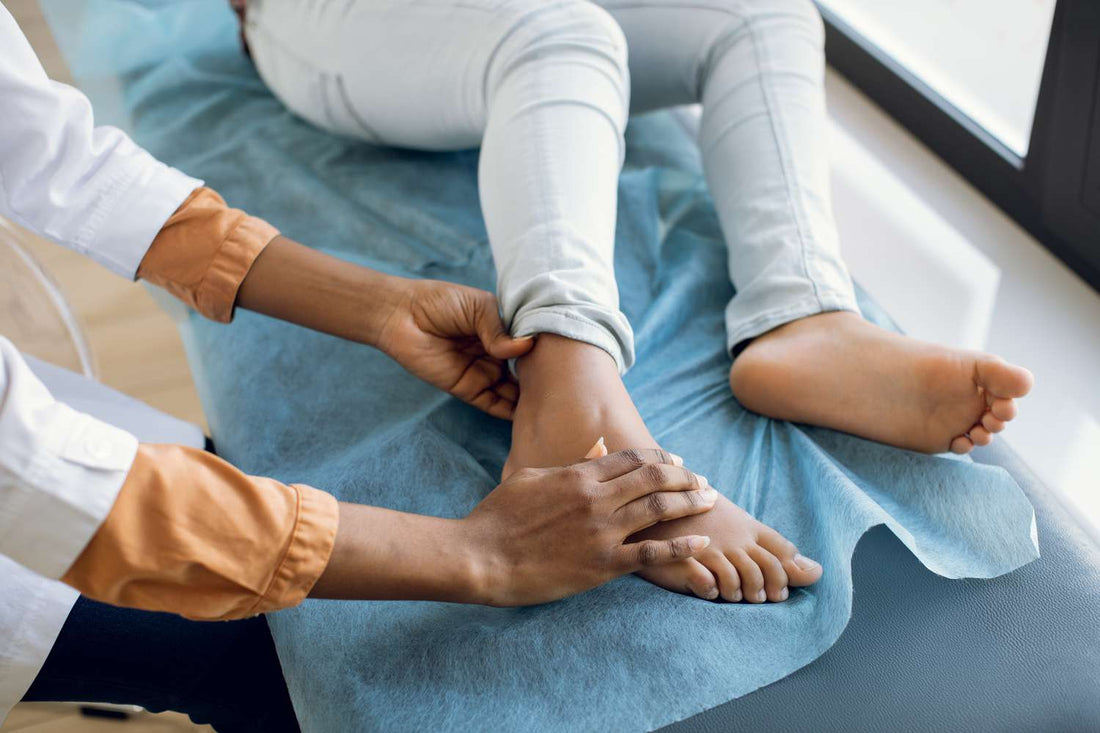Foot arch pain is a common complaint that can affect individuals of all ages and activity levels. Whether you're an athlete, a busy professional, or someone who spends a lot of time on their feet, discomfort in the arch of your foot can significantly impact your daily life. In this blog, we’ll explore the causes of arch pain, how physiotherapy can help, and some practical tips for managing and preventing this condition.
What Causes Arch Pain?
Pain in the arch of the foot can arise from a variety of factors, including:
1. Plantar Fasciitis
This is one of the most common causes of arch pain. The plantar fascia is a thick band of tissue that runs along the bottom of the foot. Overuse, poor footwear, or flat feet can lead to inflammation and pain.
2. Flat Feet (Pes Planus)
Individuals with flat feet often experience arch pain due to the lack of a natural arch. This condition can cause excessive strain on the foot's structures.
3. High Arches (Pes Cavus)
Conversely, people with high arches can also suffer from arch pain as their feet may not effectively absorb shock, leading to increased pressure on the arch.
4. Overuse Injuries
Athletes or those who engage in repetitive activities may develop overuse injuries, leading to inflammation and pain in the arch.
5. Improper Footwear
Wearing shoes that lack support or don’t fit properly can contribute to arch pain. High heels, flip-flops, and worn-out shoes are common culprits.
The Role of Physiotherapy
Physiotherapy can be highly effective in managing and treating arch pain. A physiotherapist will typically take the following approach:
1. Assessment
A thorough assessment will help identify the underlying cause of your arch pain. This may include a physical examination, gait analysis, and discussing your activity level and footwear.
2. Individualized Treatment Plan
Based on the assessment, your physiotherapist will develop a personalized treatment plan that may include:
- Stretching Exercises: To improve flexibility in the calf muscles and plantar fascia.
- Strengthening Exercises: To enhance the stability of the foot and support the arch.
- Manual Therapy: Techniques such as massage or joint mobilization to alleviate pain and improve function.
- Footwear Advice: Recommendations for supportive shoes and orthotic inserts if necessary.
3. Education
Your physiotherapist will educate you about proper biomechanics and techniques to avoid exacerbating the pain during daily activities or sports.
4. Progress Monitoring
Regular follow-ups will help track your progress and adjust the treatment plan as needed.
Tips for Managing Arch Pain at Home
In addition to physiotherapy, there are several self-care strategies you can implement to alleviate arch pain:
- Rest and Ice: Give your feet a break and apply ice to reduce inflammation.
- Footwear Choices: Opt for shoes with good arch support and cushioning.
- Stretch Regularly: Incorporate stretches for your calves and feet into your daily routine.
- Foot Massage: Gently massaging the arch can help relieve tension.
- Use Orthotics: Consider using over-the-counter or custom orthotic inserts for added support.
When to Seek Professional Help
If your arch pain persists despite home treatments, worsens, or is accompanied by other symptoms (such as swelling, redness, or inability to bear weight), it’s essential to consult a healthcare professional for a more in-depth evaluation.
Conclusion
Arch pain can be a frustrating and debilitating issue, but with the right approach and guidance from a physiotherapist, it’s manageable. Understanding the causes and implementing effective strategies can help you find relief and get back to your daily activities pain-free. Remember, your feet deserve attention and care—don’t hesitate to take the first step toward better foot health!
Book an Assessment Today at VanCity Physio!!


